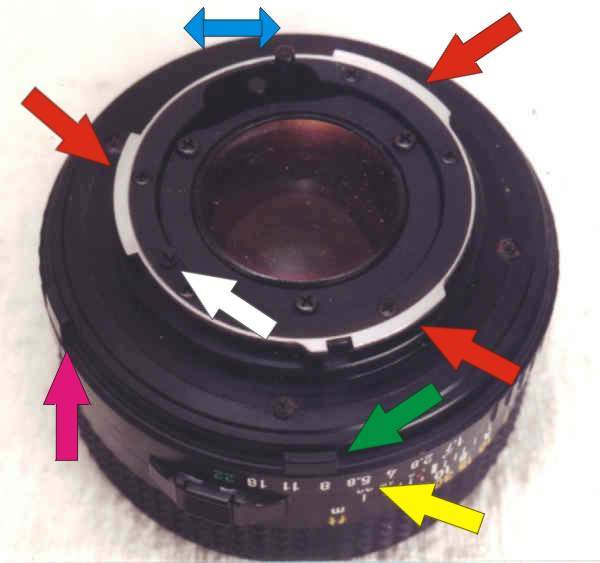
MINOLTA/CHINESE SLR LENS MOUNTS

Most people think that all of Minolta's manual-focusing SLR lenses will fit on any manual-focusing Minolta SLR camera. While that is almost true, there are certain constraints. Minolta made many changes in its lens mount over the years. Most people know this, but think it just has to do with the added features to the cameras, such as meter-coupling, aperture-preferred automatic exposure, shutter-preferred automatic exposure, etc. While this is true, Minolta made other changes to its lens mount over the years -- which did not provide any new features to the camera user. Minolta never mentioned any of these changes, but they can influence their use, and below we label the various Minolta lens mounts to distinguish them from each other. Seagull and other Chinese SLR manufacturers also made some changes to the mount.
Minolta's first SLR lens mount was, of course, for their first SLR -- oddly enough named the Minolta SR-2. But just as odd, the first Chinese SLR using a Minolta SLR lens mount did not use the SR-2 lens mount.
The first Chinese cameras to use the lens mount of the Minolta SR-2 were the Pearl River, Mingca, and Huaxi cameras -- AND they used a modified SR-2 mount.
We will label this Chinese/Minolta mount (the closest to the original Minolta SLR mount) the "PMH" mount, named after the Pearl River, Mingca, and Huaxi cameras that used it. Still, it was a variation of the Minolta mount in one significant way. In the picture below, you can see that the lens and camera mount have a non-Minolta-like locking system. It is more like the Nikon or even the Pentax system. A spring loaded pin on the camera mount (red arrow) locks into a hole on the rear of the lens (blue arrow) instead of the internal lock-tab that Minolta used. The lens was released by pressing a button next to the camera mount (green arrow) much like the Nikon and Pentax systems.
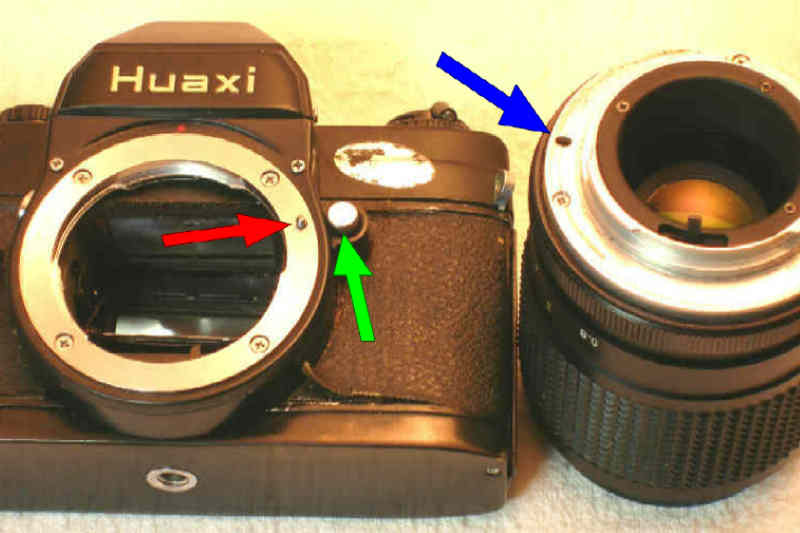
This means two things. First, lenses with the PMH mount might fit on a NON-PMH Minolta or Chinese/Minolta SLR camera, but it may not. And depending on the depth of the spacing ring, it might feel loose on the camera. Second, lenses with a more standard Minolta mount might fit on a PMH camera, but even if it does, it won't lock in place. And depending on the depth of the spacing ring, it might be very loose on the camera. So, if you turn the focusing ring, zooming ring, or the f-stop ring to the right too fast or hard, the lens might inadvertently come off. Just something to be careful about.
Like the PMH cameras, Minolta started out with a "straight-in" camera mount, and this was used by several Chinese camera companies, as we just saw. The depth of the Minolta camera mount is 20mm.
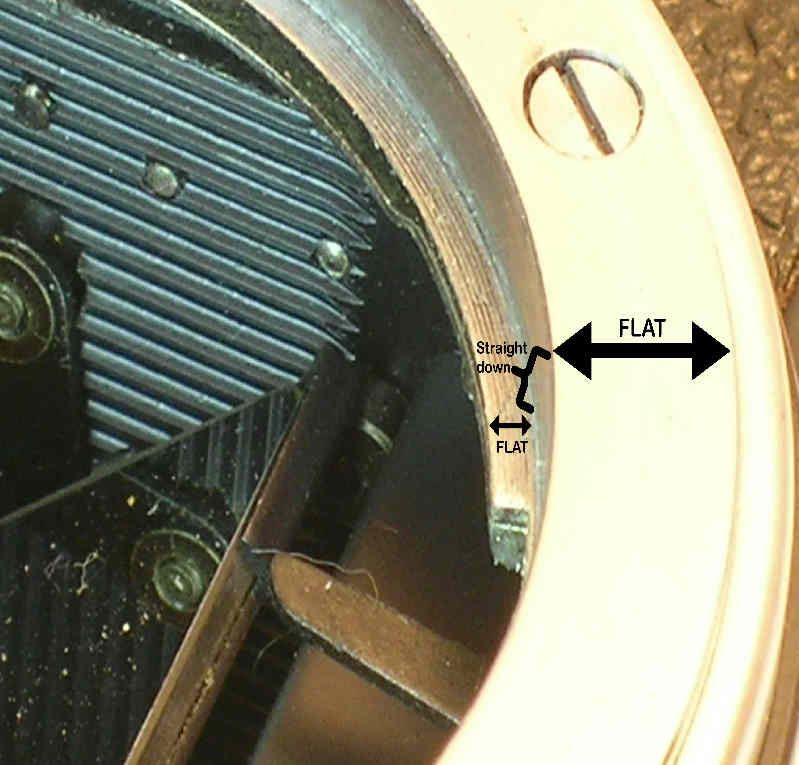
As opposed to the PMH SLR cameras, Seagull (the original copier of Minolta
cameras) started out by using, what we label here as the SR3 lens mount --
since it was first used on the Minolta SR-3 of 1963, and it was Minolta's
THIRD SLR lens mount. Minolta, Seagull, and others made lenses of this
type that frequently incorporate an external stop-down lever to over-ride
the auto-diaphragm feature (black arrow).
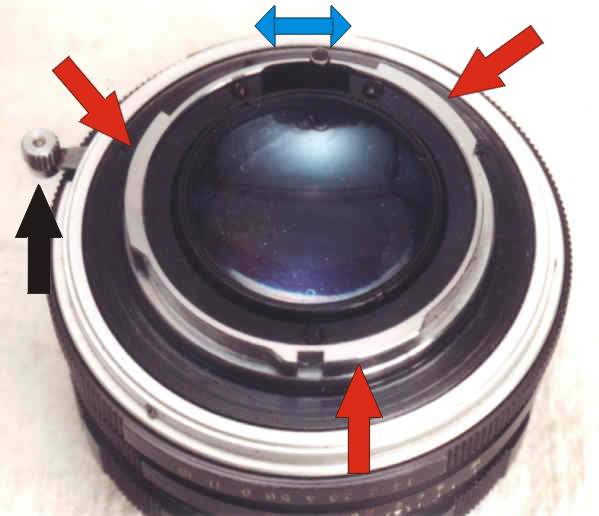
The main difference between the PMH (Minolta SR-2) mount and the Minolta SR-3 mount is the addition of a small, 45° slanted section on the top face, and a 90° section below that -- in order to make the lens slide into the camera more easily. The first Seagull cameras (also from the 1960's) used this design as well. The 45° angled part of the camera mount did not extend completely between the two flat sections. The angled section is about 5mm deep and the remaining 90° portion is 15mm deep. This original Seagull mount we will label the "DFA" mount -- the "DF" comming from the "DF" designation of the first Seagull camera to use this mount.
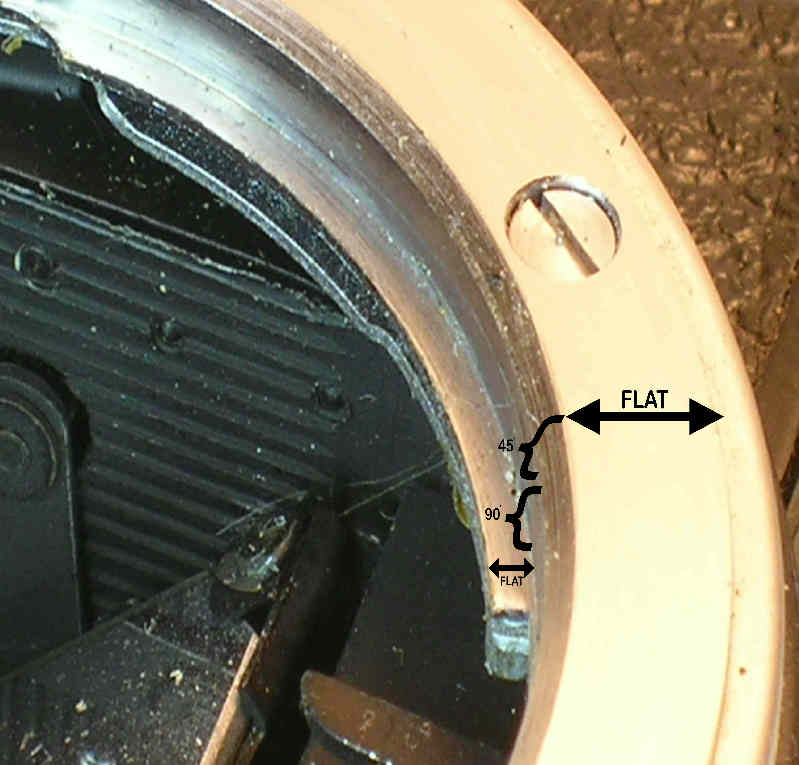
Minolta's next lens mount is the SRT mount, which adds a tab coupled to the
TTL meter in the camera body (green arrow).
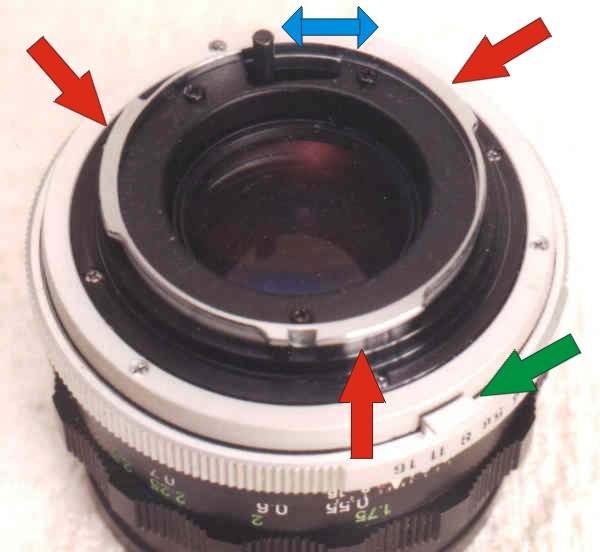
Like Minolta, Seagull, and other Chinese companies added this tab to their lenses when they added meters to their cameras.
But Minolta also increased the depth of the angled section of the mount from 5mm to 10mm, resulting in the remaining straight section being reduced to 10mm. I guess this was to make their lenses slide into the camera body even easier -- and so many of the later Chinese/Minolta cameras followed suit. We have labeled this mount the "DFB" camera mount to distinquish it from the DBA mount. The DFA and DFB mounts may look the same, but this small change might be enough of a difference to prevent some cameras and lenses from being compatible. Here is the DFB mount:
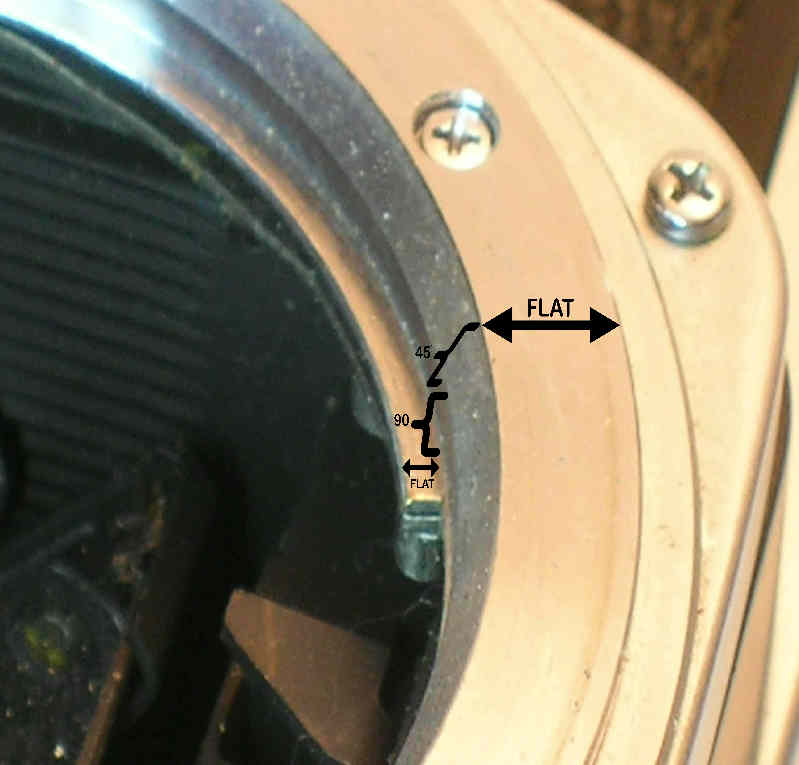
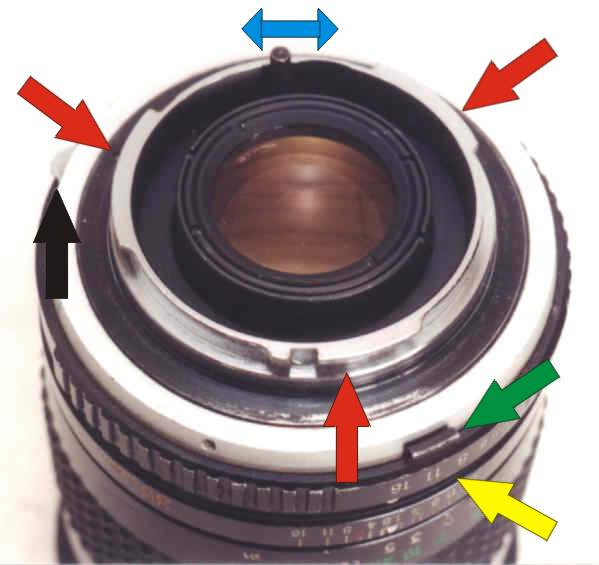
Since Chinese cameras never used this, and other, SRX features, only some Chinese lenses have only some of these features -- if they happen to have been made on a Minolta production line.
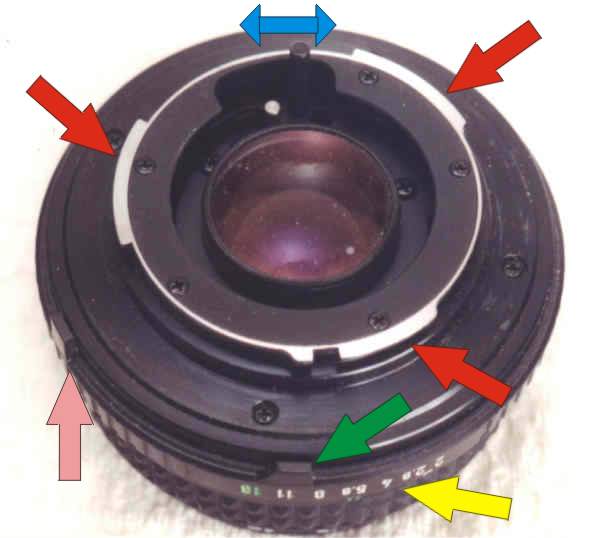
Since Chinese cameras never used these automatic exposure features, Chinese lenses only have this feature -- tab -- if they were made on a Minolta production line, or if they were made to sell to users of Minolta cameras that had this feature. That may seem odd, since Minolta only made three cameras that used this feature, but some Chinese SLR lenses were even made that included the later Minolta green "locking f-stop tab".
So be aware that not all Minolta lenses will fit on all Chinese/Minolta cameras, and not all Chinese/Minolta lenses will fit on all Minolta cameras. They might look like they should fit but the small changes made to camera and lens mounts can make them incompatible. If you need to use force when trying to attach a lens, STOP! You might be able to get the lens on the camera, but you will probably need a pipe wrench to get it off! If you try to put on a lens and you feel more than normal resistance, it's best not to force it! Doing so probably won't hurt the lens or the camera, but it just might make them an inseparable pair for life!